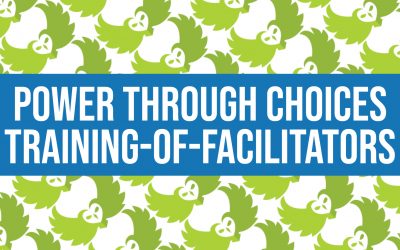
I’m Just a Bill covers how a legislative bill makes its way to law. As a public policy advocacy practitioner for over 30 years, let me just say that how a bill becomes a law is more complicated than the short film conveys.
The I’m Just a Bill video from Schoolhouse Rock covering how a legislative bill makes its way to law. VIDEO CREDIT: DISNEY EDUCATIONAL PRODUCTIONS
I’m a proud member of the Schoolhouse Rock generation. (For those unfamiliar, Schoolhouse Rock was a series of animated musical educational short films dating back to the 1970s that aired during the Saturday morning children’s programming block on the ABC television network.)
Reading up on it to write this post, Schoolhouse Rock covered a variety of subjects. I can’t say I recall all of the series’ “lesson plans.” (I wasn’t much of a STEM student.) But, I do remember those covering civics, including I’m Just a Bill (an early indicator of my career path?).
I’m Just a Bill covers how a legislative bill makes its way to law. As a public policy advocacy practitioner for over 30 years, let me just say that how a bill becomes a law is more complicated than the short film conveys.
I do give props to the filmmakers for teaching their audience that bills don’t simply appear out of thin air; rather they start with an idea from a constituent to a legislator, who then, if they support the idea, drafts the idea into legislation and introduces (or drops) a bill. Even those first steps of a bill becoming a law are more complicated than I’m Just a Bill articulates. (No worries, what age- and developmentally-appropriate public policymaking instruction can one deliver to elementary school-age children in a three-minute film?)
Allow me to fill in some of the gaps on bill introduction for our adult learners out there. And what better way to do so than to uncover the real process that led to last week’s introduction of the Real Education and Access for Healthy Youth Act (REAHYA), a youth sex education and health services access bill whose drop was timed to coincide with Sex Ed for All Month.
I’m Just a Bill does let the children know that most bills introduced in Congress “die” rather than become law. And so was the case for the source bills preceding REAHYA, the Real Education for Healthy Youth Act and the Youth Access to Sexual Health Services Act.
Those two pieces of legislation have been introduced and died through several prior Congresses. That’s typical. It can take years or decades (or never) for legislation to make it out of the starting gate.
I’m Just a Bill makes it sound pretty easy for one constituent to convince one legislator to introduce a bill. Sometimes it is that straight forward. More often, it takes more than a simple constituent ask.
And, what about advocacy groups and lobbyists. I’m Just a Bill doesn’t talk about us. (I say “us” because Healthy Teen Network is not an advocacy organization per se, but we do conduct public policy advocacy as one of our core member services.) Are we constituents? No and yes.
Advocacy groups are not constituents themselves, but we do represent them. And often it is a group of advocacy organizations that form of a coalition to bring their collective idea to a legislator. Such was the case with REAHYA, where the organizations leading Sex Ed for All Month plus a few others did the coalescing and the asking.
Our primary ask this year was to combine the separate REHYA and YASHS bills of Congresses past into a single bill. Doing so would allow us to convey the message, in the form of public policy, that youth have a right to both sex education and services and moreover that both components need to connect.
Our primary ask this year was to combine the separate REHYA and YASHS bills of Congresses past into a single bill. Doing so would allow us to convey the message, in the form of public policy, that youth have a right to both sex education and services.
I’m Just a Bill would lead one to think that it’s a slam dunk to find one legislator to introduce one’s bill. Again, not really so. Often a constituent, advocacy organization, or coalition has to beat bushes to find a bill sponsor. Not because their ideas are unimportant or weak. It’s usually a matter of how much bandwidth the legislator, or their staff, have to take on a bill. Because there is way more to sponsoring a bill to dropping it and washing one’s hands of it. Nope, legislators know that if they sponsor a bill, there will be folx like the constituent, organization, or coalition that persuaded them to sponsor checking in to see whether the bill is moving.
In the case of REAHYA, we were fortunate that the Sex Ed for All coalition didn’t have to rustle up bill sponsors. We trusted that we could reach back to the legislators that sponsored earlier versions of the bill and that they would say yes. Gratefully, all pledged to reintroduce.
And so, our thanks go to U.S. Senators Cory Booker (D-NJ) and Mazie Hirono (D-HI) and U.S. Representatives Barbara Lee (D-CA) and Alma Adams (D-NC) for serving as the original sponsors of REAHYA. (Technically Senator Booker and Representative Lee are the bill sponsors, because as I’m Just a Bill teaches, each bill is introduced by one legislator.)
With reintroduction commitments in place, it then came time to bill drafting. I’m Just a Bill portrays a rather cute animation of a legislator hovering over his typewriter, turning his constituent’s idea into legislation. (The legislator is a White man of course, because this was made in 1973 and that would have been a pretty accurate depiction of a Member of Congress back then; some would say it’s still pretty on point in 2021).
Hahaha. If only. Often, it’s an advocacy organization or coalition that kicks off bill drafting. Either they have in-house capability to write the bill or they hire lawyers with legislation development expertise. And then they bring a draft bill to the legislator. And not really to the legislator directly, but to a staff member who represents the interests of their “boss.”
In the case of REAHYA, the coalition had the bill language of the earlier Congresses as a great start. But we needed to merge two separate bills into one. And we also wanted to refresh the prior bills’ language with up-to-date facts about the (poor) state of sex education in many parts of the country. And introduce into the bill values of eliminating racial and gender inequities and achieving reproductive justice. And align the bill text more squarely with the National Sex Education Standards. And improve the definition of “marginalized youth” and the scope of services to be delivered in the health services section of the bill. And… well you get the point.
Let’s just say that it took a village of policy wonks, perhaps 100 email trades, and ten conference calls to get a draft REAHYA into excellent form.
How do I know the draft was excellent? Well, attorneys in the Office of Legislative Counsel, the division supporting the Congress in drafting legislation (among other duties) returned our bill draft to the bill sponsors with very few suggested changes. That was a big win. Sometimes what we outside the Congress think will make perfect sense to say in legislative form turns out to be big no-nos and requires a wholesale do-over. (For sure, “legco” does more than proofread outside groups’ work. Typically, those attorneys take outlines of a constituent/legislator’s conceptual idea and turn it into bill language.)
So, what next. One needs a promotion plan if the bill is going to go anywhere. No wonder “Bill” in “I’m Just a Bill” looks awfully tired. He ain’t getting any push up the stairs into that big ole U.S. Capitol.
At the bill introduction stage, this tends to be an outside-inside tag team. Outside advocates often write the fact sheets and section-by-section summaries; ghost write “Dear Colleague” letters for the bill sponsors to circulate to their peers; and “whip” Members of Congress to endorse the bills as original co-sponsors.
Inside legislative staff push out those Dear Colleague letters, field questions from their peers, do their own “whipping,” collect names and signatures of co-sponsoring Members, and take those names and the bill text to the floor of their legislative chamber and “drop” the bill.
As you can see, bill introduction is more than I’m Just a Bill could possibly cover, unless those filmmakers were going to attempt a full-on Hamilton production.
And that’s just to get a bill into and out of the starting gate.
Because you, as a supporter of Healthy Teen Network, you now have an opportunity to “sing the jingle” by contacting your two U.S. Senators and your one U.S. Representative and ask them to co-sponsor the Real Education for Healthy Youth Act.
The next step in “Bill’s” journey involves YOU. Because you, as a supporter of Healthy Teen Network, you now have an opportunity to “sing the jingle” by contacting your two U.S. Senators and your one U.S. Representative and ask them to co-sponsor the Real Education for Healthy Youth Act.
It’s easy to do. Go to senate.gov and house.gov. Find the web sites of your U.S. Senators and your U.S. Representative. Their sites list the telephone number for their Washington, D.C. offices. There is a (mostly likely) young adult poised on the other end of the line to take your action request. Or, you can fill out a constituent request form on those web sites if you prefer writing.
The basic message to convey is:
“Hi. I’m [state your name.] I’m a constituent of the Senator/Representative. I ask them to add themselves as a co-sponsor of the Real Education and Access for Healthy Youth Act. The bill number is S. 1689/H.R. 3312. This bill is important for ensuring that all youth in our state have access to high-quality sex education and sexual health services. I hope the Senator/Representative will co-sponsor the legislation. I look forward to seeing them listed as a co-sponsor or to receive an explanation of their position on the bill.”
Bill is now hanging out in the U.S. Capitol, waiting for his moment in the sun. Please make that call or send that note today so that we can help him—and the young people that the Real Education and Access to Healthy Youth Act supports—inch closer and closer each successive Congress to the finish line known as “signed into law.”
Bob Reeg, MPA, CVA, is a Program Development and Public Policy Consultant with Healthy Teen Network. With 30 years’ experience in public policy advocacy, he is always ready to give the rundown on what’s happening—or what’s not—on Capitol Hill. Read more about Bob.













